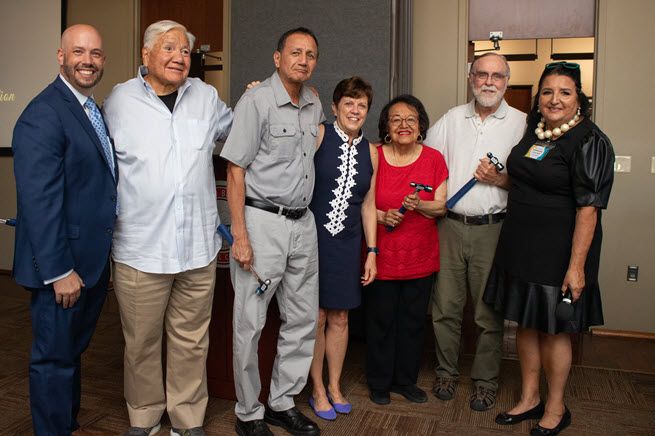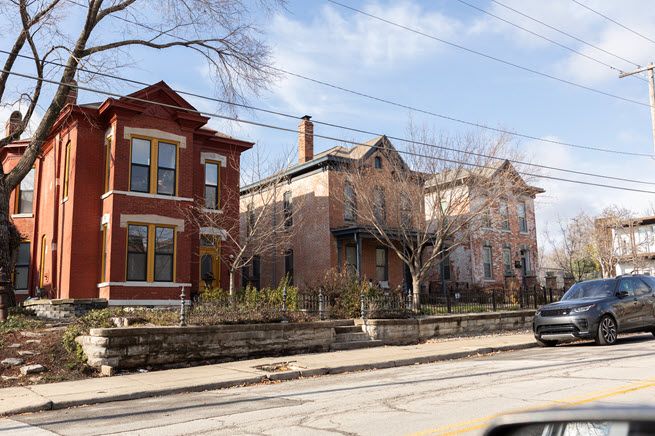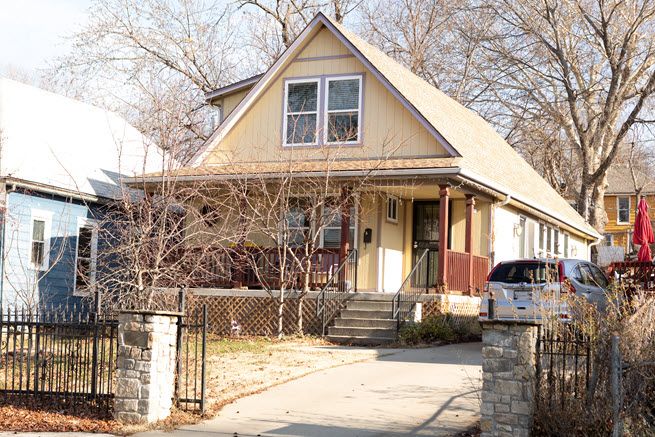External LinkSince the early 1900s, Mexican immigrants have settled in Kansas City, Missouri’s, Westside neighborhood. They often found work with the railways, in downtown hotels and in factories and packing houses. Today, Westside nonprofits celebrate Mexican culture and serve new and old immigrants. The Westside has had its challenges, including External Linkredlining, and its champions. Residents worked mostly successfully to keep it stable and safe. Generations of family and extended family lived close by in bungalows or old brick and stone homes. Housing was affordable.
Until, suddenly, it was not.
Kansas City, Missouri, has found a unique way to help long-time, lower income residents of the Westside, a rapidly gentrifying neighborhood, remain in their homes. As property taxes soared, local leaders resurrected a decades-old redevelopment tool and turned it on its head. Originally used to help typically large property developers redevelop blighted property, in the Westside neighborhood today it benefits individual, often elderly, homeowners. Its most innovative element: Residents making less than about $82,000 a year are not taxed based on the value of their property. Instead, for up to 25 years, they can pay 2.65% of their income.
“It’s radical,” Colleen Hernandez said. She volunteers as director of outreach for the Chapter 353 Development Plan at the Westside Housing Organization. “The average Jackson County resident spends 2.65% of their income on property taxes. Our people, after taxes went up, were spending 15-20% of their already meager income on property taxes. It just wasn’t fair.”
The process is fairly straightforward for residents who own their properties outright. Things are more complicated for those who have mortgages. For them, using the old redevelopment tool requires help from their bankers. Mark Larrabee, president and CEO of Arvest Bank in Kansas City, is one of those. “The Westside came up with a very creative approach to avoid gentrification by freezing taxes, which in turn allows people to stay in their homes longer,” he said. “I was very much in favor of it. It doesn’t put the bank in any kind of disadvantage, and it would make a big difference for our customers.”
From stagnant to a city with fierce competition for housing
The Westside occupies what is now prime real estate in a city that has gone from stagnant to one of External LinkLonely Planet’s top 10 cities to visit in the world. Luxury condos sprout on Westside streets overlooking downtown Kansas City. Everywhere, teardowns and renovations for wealthy newcomers dwarf modest homes of long-time residents.
In 2019, according to External LinkThe Kansas City Star, “Jackson County attempted to make up for years of under-valuing residential properties and exponentially raised property assessments. Some longtime homeowners in the Westside saw their county-assessed property values increase by more than 400%.”
Community leaders find a new use for Chapter 353 redevelopment tool
Ten volunteers – attorneys, redevelopment experts, neighborhood leaders – banded together to try to keep long-time residents from being forced out by soaring property taxes. Colleen Hernandez was one of the volunteers.

At the Westside Housing Organization 2023 annual dinner, from left to right: Joe Hood, deputy director, Westside Housing; Bob Hernandez, retired councilman; Richard Hernandez, neighborhood president; Colleen Hernandez, 353 outreach director; Alice Gomez, longtime neighborhood activist; Michael Duffy, retired, Legal Aid; Gloria Fisher, CEO, Westside Housing.
Before leaving to open a consulting firm in 2014, Hernandez led the Homeownership Preservation Foundation, a national nonprofit. Before that, she was executive director of the Kansas City Neighborhood Alliance. Hernandez served on the Federal Reserve Bank of Kansas City’s Board of Directors for six years, from 1994 to 1999. She has lived on the Westside for 22 years. (Her husband, a former city councilman, has lived there for 78 years.)
The volunteers created and deployed the Chapter 353 Redevelopment Plan. “External LinkChapter 353 is a state statute typically used for major developers who say, I cannot do this development but for the tax abatement that I would receive under 353,” Hernandez said. The statute can only be used in a blighted area, to remove blight. “Here, it is applied to low-income people who need tax abatement in order to preserve their homes.” It removes blight by requiring homeowners to make a modest investment in the property, with additional funding available to assist lower income residents.
Lower income residents pay based on income; higher income pay based on property values
The Kansas City, Missouri, City Council passed the 353 ordinance on September 22, 2022. The program is open only to the 528 homeowners who owned their Westside homes on that date. Of those, 272 have enrolled in the program so far. At least 30% make less than $25,000 a year, Hernandez said, but the program is open to all Westside homeowners. Residents making less than about $82,000 pay 2.65% of their income. Those who make more than about $82,000 a year pay based on property values. For up to seven years, a higher-income homeowner can receive a break of from 10% to 40% on what the county would otherwise bill them.
Higher income residents get a tax break in the first seven years of the 25-year program
Here’s an example of how the program works for a higher-income homeowner. Someone who makes $180,000 a year gets a 10% break for seven years, so pays 90% of the normal property tax bill. The homeowner splits that 90% between the county and the Westside Housing Organization.
The homeowner pays the county only the tax on the value of the land, not the house. Michael Duffy is an attorney, recently retired from Legal Aid of Western Missouri, and one of the volunteers working with Hernandez. He says that, on average, a house in the Westside is worth more than the land, but there are extremes on both ends. “Because the Westside is so gentrified, the land may be high value, but the house is considered essentially valueless.”
The remainder of the tax bill minus whatever taxes are paid to the county goes to the Westside Housing Organization for its Neighborhood Support Fund.

The Westside's stately historic homes have drawn new residents to the neighborhood.
The Neighborhood Support Fund does three things:
- Offsets the expenses of the program;
- Helps low-income homeowners with minor home repair and tax delinquency issues; and
- Goes to the taxing authorities if there is a surplus.
The tax break expires in the eighth year, but the homeowner continues to split payments to the county and the Neighborhood Support Fund until the 25 years is up. “It is a self-perpetuating, 25-year funding cycle,” Hernandez said. “We don’t need grant money or city contracts as long as we have adequate participation from higher income, middle income and lower income people.”
Banks asked to be involved because of deed transfers
Homeowners that want to join the Chapter 353 program sign a contract saying they will pay the neighborhood support fee and spend at least $1,000 over three years fixing up the property. Then the property title must, for a very short period of time, be transferred to the Westside Redevelopment Corporation. The corporation then records the deed with the county, so the county knows not to send the homeowner a property tax bill. Then the corporation immediately issues a quitclaim deed that returns the title to the homeowner.
Some home loan agreements have a “due on sale” clause that says if anything happens to the deed, the bank can invoke the clause. Potentially, that could mean that the borrower would need to refinance. That’s why the Westside Redevelopment Corporation asks the bank to sign a form saying they will not invoke the clause with the mortgage holder.
“The borrower doesn’t change, the address doesn’t change, the loan balance – nothing changes, but it is recorded at the County and then it comes back,” Hernandez said. “If a bank were so inclined it could invoke the clause.”

Modest bungalows house many of the Westside's long-time residents.
About a third of Westside residents who have enrolled in the program have mortgages. While several local bankers have signed the form, not many of the national or regional banks have yet. “Just getting their attention has been a challenge,” Hernandez said. She has talked to bank presidents, she said, who say there’s virtually no risk that a bank would invoke the clause.
Mark Larrabee at Arvest Bank chose to sign the form. Arvest services 99% of the loans they originate. Larrabee said that he saw signing the form as a way to serve the community. “The more stable the property tax environment, then the more stable is that homeowner’s capacity to repay,” he said. “If you’re facing double-digit increases in your property tax, that’s going to affect your ability to keep your mortgage current. I thought it was a great opportunity to help residents, keeping their financial position more stable.”
Chapter 353 program preserves the nature of the Westside
In 20 years, Hernandez says, the biggest impact of the Chapter 353 program will be retaining the Mexican nature of Westside. “The higher-income residents who have joined the program have told me they want to live in a diverse neighborhood economically and ethnically,” Hernandez said. “In order to make the Westside continually diverse and to retain the people who built this neighborhood, the low-income senior Mexican American families, we need this program. It will give the people who want to stay here the assurance that they won’t be driven out by high taxes.”
